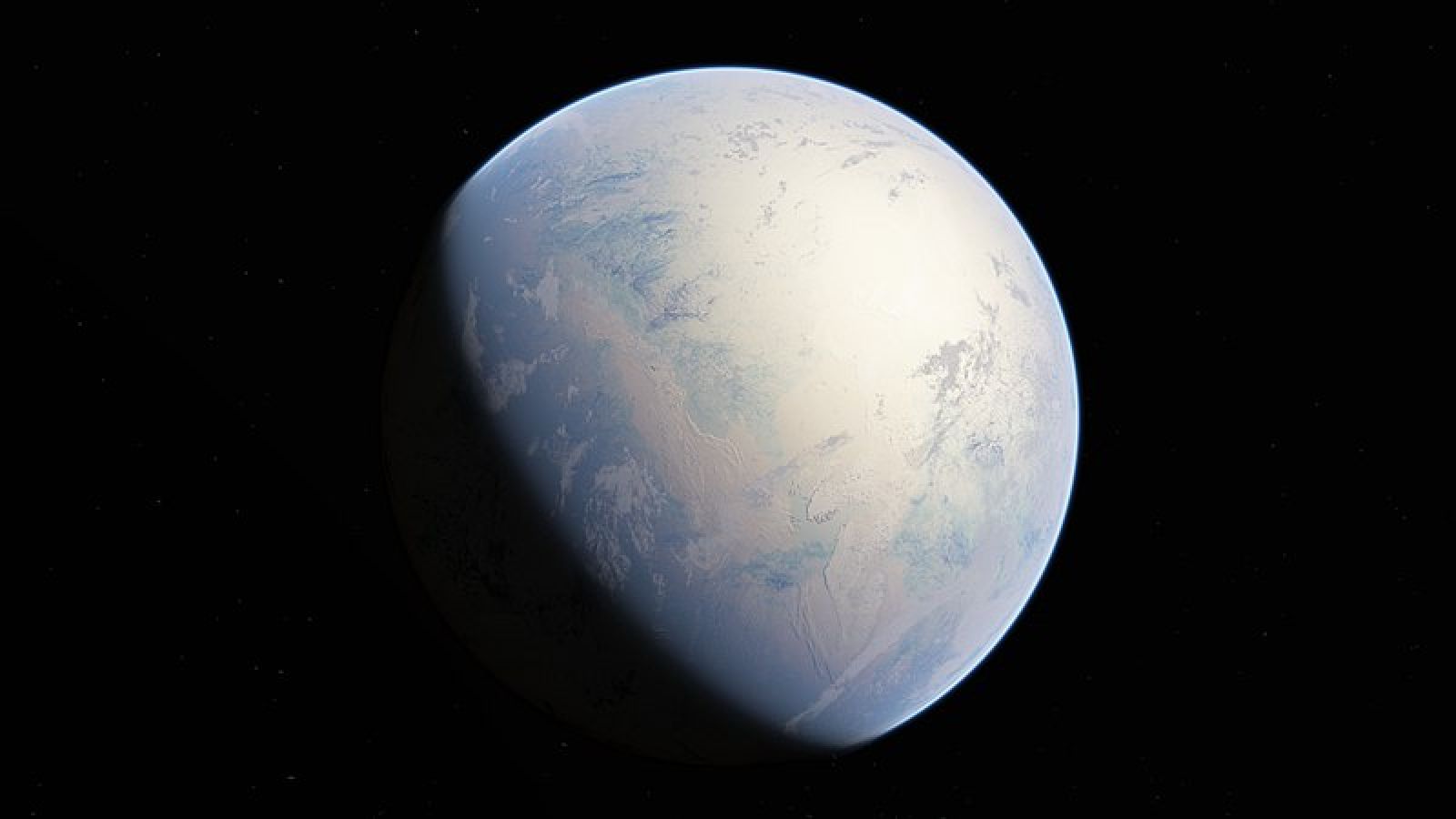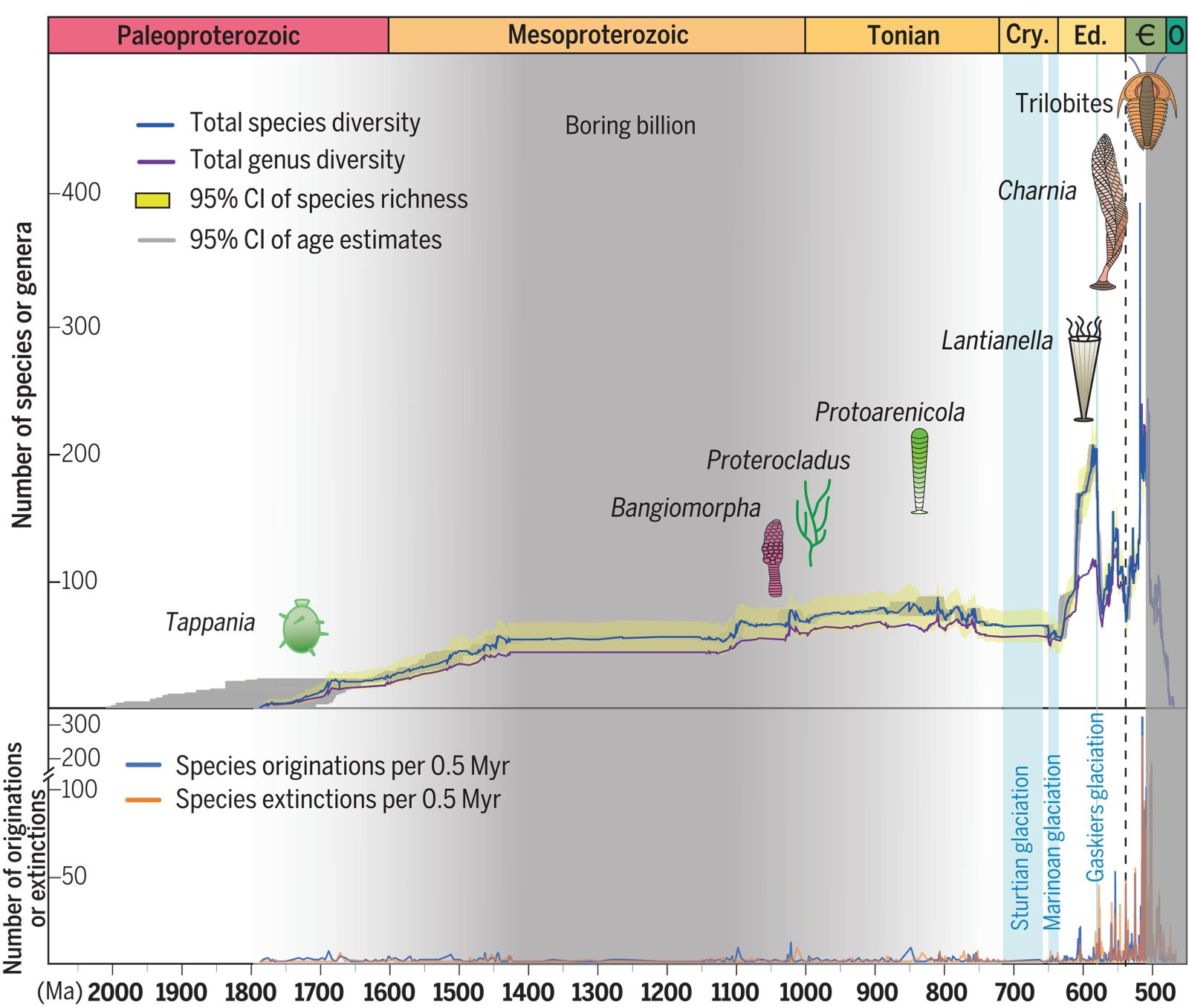Follow us on Google News (click on ☆)

Artist's depiction of a 'Snowball Earth' completely frozen, with no liquid water on the surface.
Image Wikimedia
An in-depth analysis of marine eukaryotic fossils, organisms whose cells contain a nucleus, has provided a better understanding of the evolution of life on Earth. This research shows that the first eukaryotes appeared at least 1.8 billion years ago, with stable diversity during the 'boring billion'.
The ice ages, known as 'Snowball Earth', played a crucial role in resetting the evolutionary path. After these glacial periods, a rapid increase in the diversity of eukaryotic species was observed, marking the end of the so-called 'boring' period.
Shuhai Xiao, a geobiologist at Virginia Tech, emphasizes the importance of these findings for understanding evolutionary dynamics. The use of a graphic correlation program has allowed for greater temporal resolution, providing valuable insights into the evolution of life.
The questions raised by this research open new perspectives for future studies. Why was eukaryotic evolution so slow during the 'boring billion'? What factors contributed to the acceleration of evolution after the glaciations? These questions remain central to understanding the complex history of life on Earth.

Evolutionary models and dynamics of eukaryotes from the Proterozoic and early Cambrian.
Top: Taxonomic richness of eukaryotic fossils (the sketches represent representative fossils).
Bottom: Rates of species appearance and extinction. Note the scale change at 100 on the vertical axis. The light gray, blue, and dark gray vertical bars indicate the 'boring billion', glacial intervals, and the buffer zone due to edge effects, respectively. Cry., Cryogenian; Ed., Ediacaran; Ꞓ, Cambrian; O, Ordovician; CI, confidence interval; Myr, million years.
This study, based on a global compilation of fossil data, represents a significant advance in our understanding of ancient biodiversity. It highlights the complex interactions between life and environmental changes on a geological scale.
The results of this research, published in Science, provide a solid foundation for exploring the mechanisms behind major evolutionary transitions. They underscore the importance of extreme climatic events in the reorganization of terrestrial biodiversity.
What is the 'boring billion'?
The 'boring billion' refers to a period in Earth's history, approximately 1.45 to 0.72 billion years ago, characterized by relative stability in the diversity of eukaryotic species. This period is marked by a particularly low species turnover rate.
During this era, environmental conditions were relatively stable, which could explain the slow evolution of species. Oxygen levels in the atmosphere and oceans were also constant, limiting evolutionary pressures on organisms.
This stability allowed some species to persist for millions of years without significant changes. However, this period also raised questions about the mechanisms that ultimately led to a rapid diversification of species after the ice ages.
Understanding the 'boring billion' is crucial for scientists, as it provides clues about the conditions necessary for the emergence of biological complexity and the factors that can disrupt or accelerate evolution.
How did the ice ages influence evolution?
The ice ages, particularly the 'Snowball Earth' events, had a profound impact on the evolution of life on Earth. These periods of extreme glaciation led to drastic environmental changes, which acted as a 'reset' for biodiversity.
After the ice melted, environmental conditions changed radically, creating new ecological niches. This allowed for a rapid diversification of species, particularly eukaryotes, which were able to colonize new habitats.
The increase in oxygen levels after the glaciations also played a key role in this diversification. Oxygen is essential for cellular respiration and enabled the development of more complex and diverse organisms.
These events show how major climatic changes can influence the evolution of life, creating conditions conducive to the emergence of new species and the extinction of others. This highlights the interconnectedness of geology and biology in Earth's history.